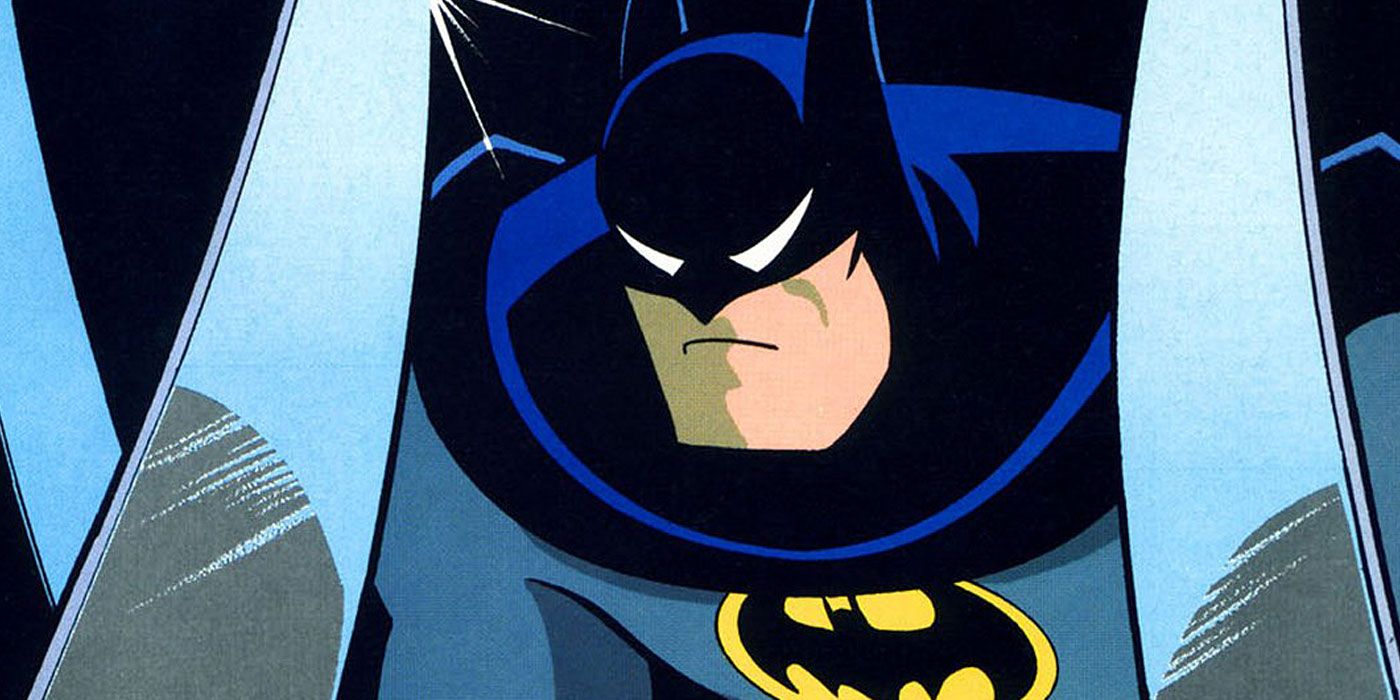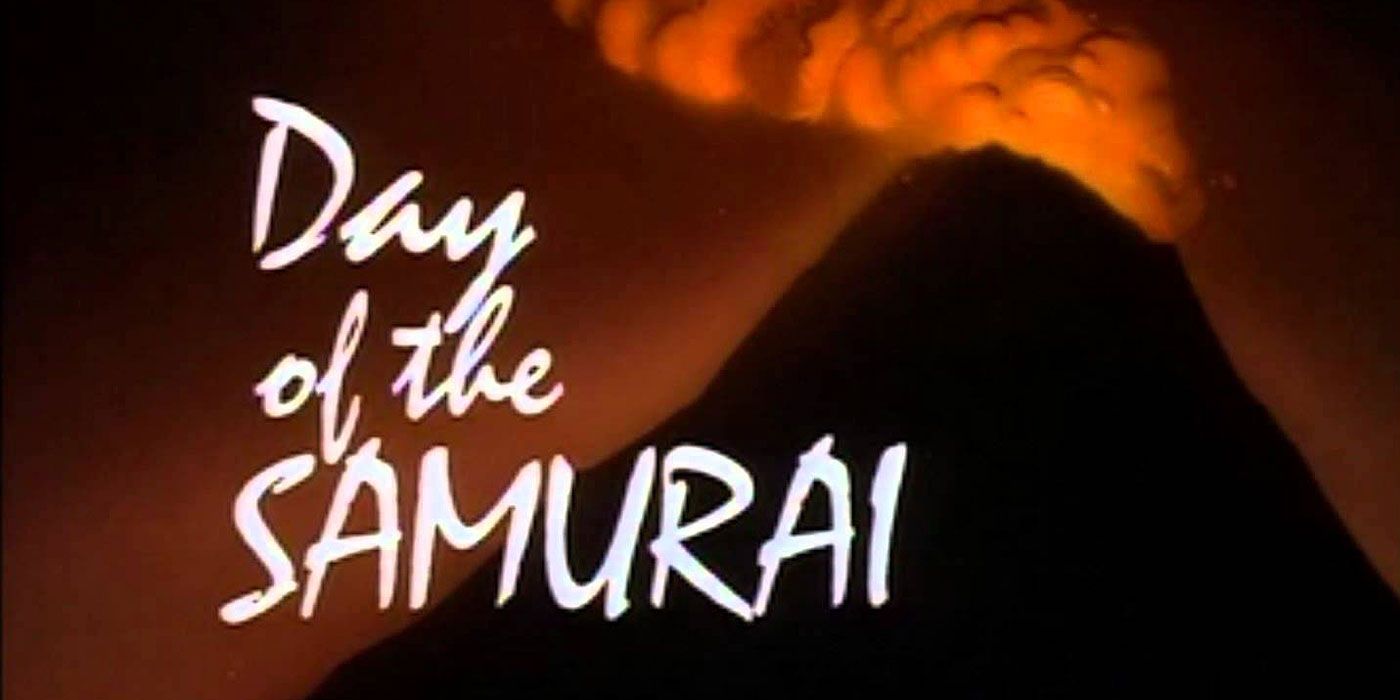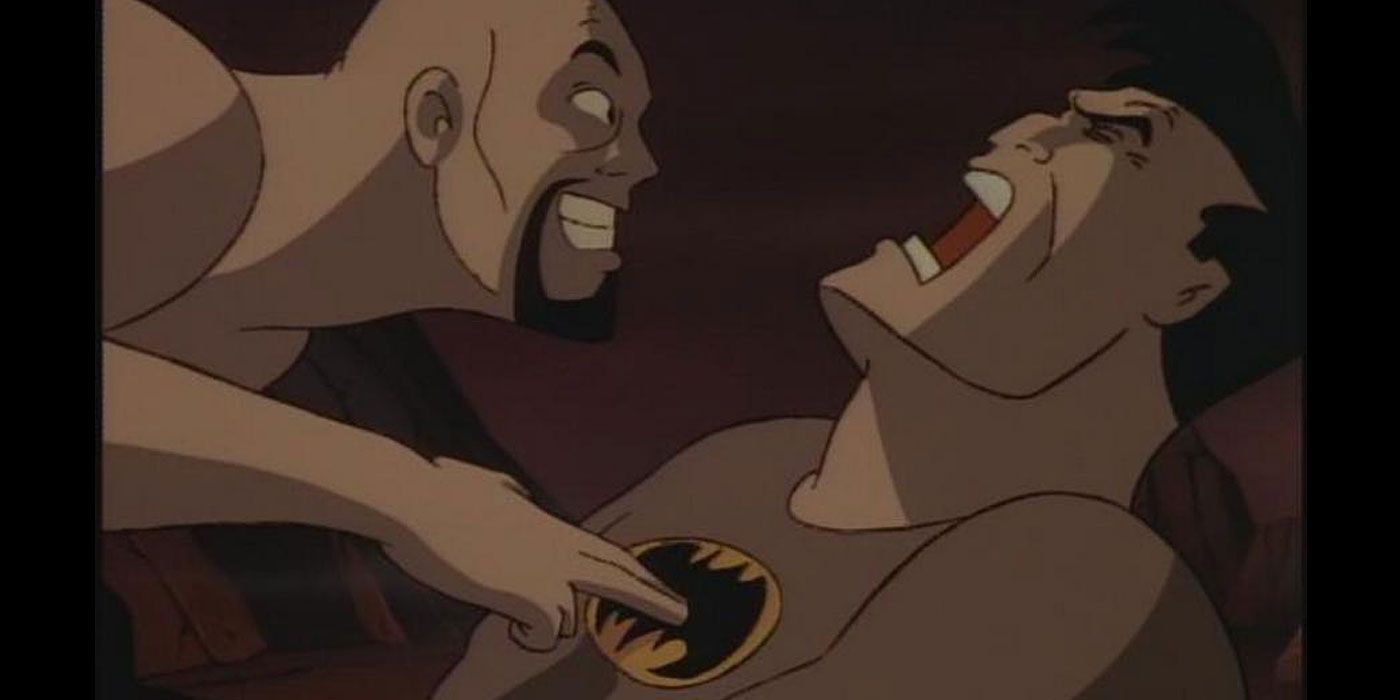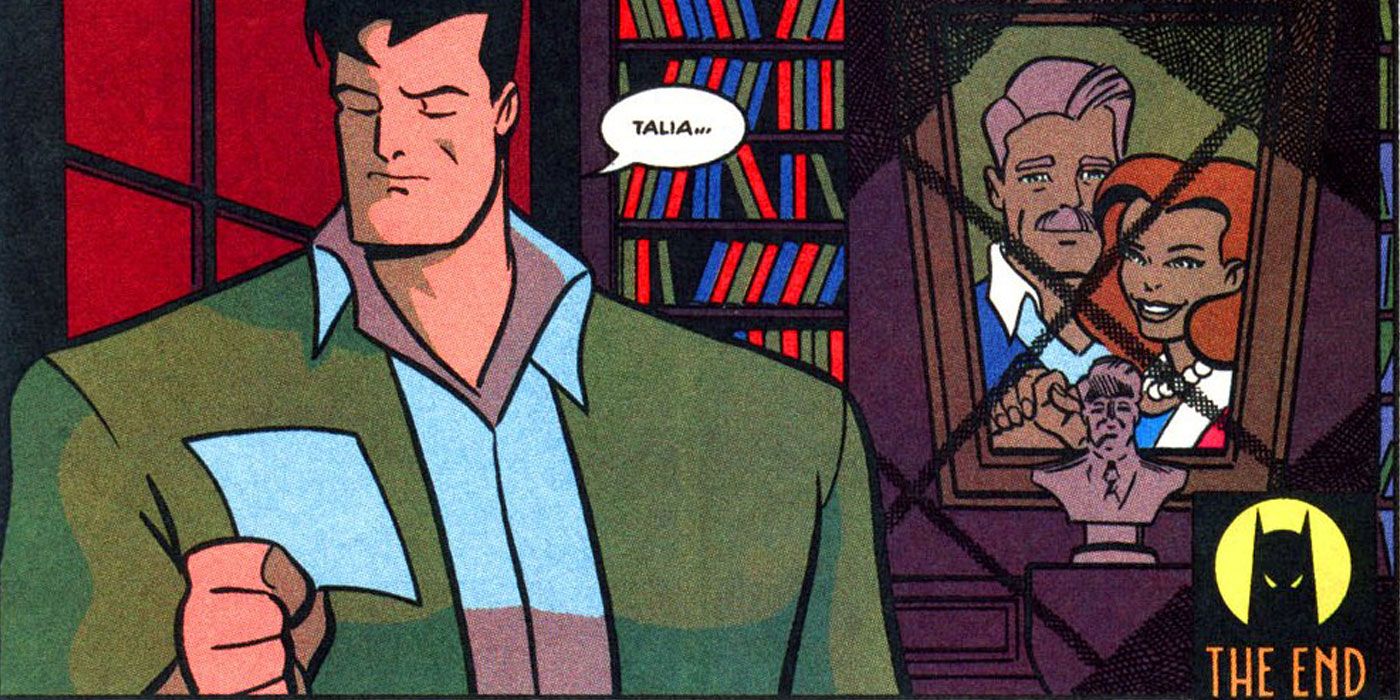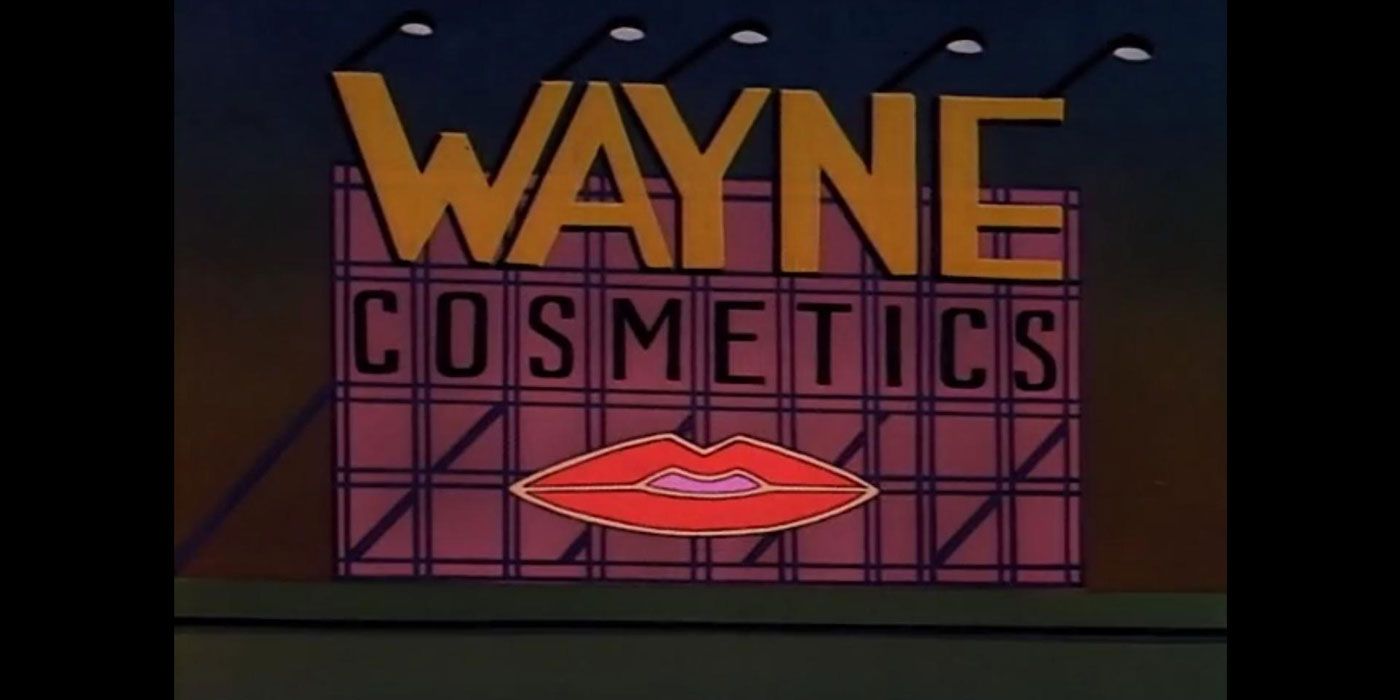Welcome to the fourth installment of Adventure(s) Time, where I examine a classic episode of "Batman: The Animated Series" and an issue of its comic tie-in, "Batman Adventures," which shares a similar theme. In this installment, Batman can't seem to shake that pesky Kyodai family.
Unfortunately, this week's selection is another instance of the term "classic" being used a bit loosely. The debut appearance of Kyodai Ken, a disgruntled martial artist who knew Bruce Wayne from his time in Japan, came in "Night of the Ninja." It featured the usual fine work of director Kevin Altieri, and the animation crew at Dong Yang Animation. The script by Steve Perry (who isn't the animation writer who met an unfortunate end a few years ago, but is actually the writer better known for his "Star Wars" novels) doesn't do much to make Kyodai Ken a compelling villain, but the plot was well-structured, and the story had a few nice moments between Robin and Batman, whose relationship is being tested by Batman's condescending attitude. Reporter Summer Gleeson also has one of her better showings in this episode, as she deduces that there's more to Bruce Wayne than what he presents to the public. After a series of robberies at various firms owned by Wayne, beginning with Wayne Cosmetics, Summer grows suspicious. Against the wishes of her boss, she investigates the connection between this mysterious ninja and Wayne. Of course, the episode ends with her being kidnapped and buried under a carpet roll while Bruce Wayne defeats the villain, but it remains one of the few episodes to feature Summer acting as a real reporter. So, even if the villain is a derivative ninja cliché, "Night of the Ninja" has more than enough going for it to compensate for the weak antagonist.
The follow-up episode "Day of the Samurai" is, by any definition, a disappointment.
Again featuring a Steve Perry script, "Day of the Samurai" is the fifty-fifth episode of "Batman: The Animated Series," originally airing on February 23, 1993. It's also one of the few episodes of the series directed by "Animated Series" co-creator Bruce Timm -- not because he had a personal stake in the story, but simply because there weren't enough directors to go around, and sometimes he was forced to personally oversee an episode. The animation for the piece is provided by Blue Pencil, S.I., and to call this crew one of the "lesser" studios to work on the show is an understatement. The movements are stiff, continuity mistakes occur frequently, the lip synch is often wrong, the line weights look odd, and for much of the episode, the character models appear off. There are a few smooth movements during the episode's climax, as Kyodai Ken and Batman face off outside of an active volcano, but it's not enough to save the episode.
I'll also note that Bruce Timm wanted all of his episodes to feature a moving object on its title card (breaking the show's tradition of a simple painting) as his personal signature. "Day of the Samurai" features no movement on its title card, and I believe Timm has stated that it's missing because he simply forgot about his personal signature this time.
The story opens in Japan, at the dojo owned by Yoru Sensei, formerly the master of both Bruce Wayne and Kyodai Ken. Yoru Sensei's new star pupil, Kairi, is practicing one night when she's kidnapped by Ken. Ken demands a ransom, which is eventually revealed as an ancient scroll that details the "o-nemuri attack," a one-touch move that can be fatal. (Kairi will reappear, years later, as an older woman in the "Batman Beyond" episode "Curse of the Kobra.")
Yoru Sensei contacts Bruce Wayne, has him fly to Japan, and not-so-subtly implies that he knows Bruce's secret and that he needs the help of the legendary Batman. As Batman, Bruce rescues Kairi, but is unable to prevent Ken from obtaining the most important part of the scroll, the portion that reveals the death touch.
Along the way, Batman reveals to his travel-mate Alfred that Ken has known since their last encounter that Bruce and Batman are the same man, thanks to their distinctive fighting style. Unsurprising for the viewer (even though, for some reason, the characters are stunned), Alfred's soon kidnapped by Ken and taken to the site of an active volcano. Batman arrives for the rescue, confronts Ken, and for no good reason, acquiesces to Ken's demand that he remove his cape and cowl during the fight. The location on the human body that's susceptible to the death touch turns out to be the spot on Batman's chest that's covered by his trademarked Bat-emblem, and after facing defeat, Ken decides that he would rather perish in the volcano than accept help from his enemy. After receiving reassurance from Yoru Sensei that Batman is truly a samurai, and not the ninja Kyodai Ken claimed, Bruce and Alfred return home.
Now, as far as set pieces go, a martial arts battle at a live volcano is a fine climax for an episode. But so many of the elements of this story are just ridiculous. Due to numerous plot conveniences, Yoru Sensei is no help at all to Batman during the episode, Kyodai Ken's motivations remain half-baked, a sloppy retcon reveals that Kyodai Ken knows Bruce's secret ID (even though Bruce wasn't at all concerned about Ken escaping in his last appearance, and only Bruce Wayne, not Batman, used martial arts against Ken in "Night of the Ninja," so what "fighting style" did he recognize?), and there's a trope from this run of episodes that always bugged me as a kid. Why was Batman constantly losing his cape in the earlier episodes of this series? Did it save a few bucks on the animation budget? Also, did even the most impressionable viewer really think Batman was killed when Ken jabbed him with the death touch? I suppose it is a miracle that Standards & Practices even let the producers tease the thought for around seven seconds.
Even though the first attempt at a "Night of the Ninja" sequel didn't turn out so great, this didn't prevent the monthly "Batman Adventures" series from giving it a go. "Batman Adventures" #24 (September 1994) is from the Kelley Puckett, Mike Parobeck and Rick Burchett era of the series. It opens with Batman foiling a jewelry store robbery, only to discover that the thief has somehow disappeared in the split-second Batman lost sight of him. The scene then cuts to the hotel room of a mystery woman, who has a shrine to the thoroughly unlikable Kyodai Ken. We soon learn that this is his sister, Kyodai Naoko, who has traveled to Gotham to kill Batman as retribution for Ken's death. A group of nondescript ninjas appear, telling her that someone named Furukawa has deemed Batman off-limits, and if she doesn't back off, Furukawa will send Kano Keiji to deal with her.
Kyodai Naoko is stunned by the revelation, and seems to relent to the ninjas' demands. Now, at this point, the issue has yet to identify who Kyodai Naoko, Kyodai Ken, Kano Keiji and Furukawa even are. It's page after page of silent action featuring Batman, but there's no attempt to explain any of the context. The mystery of the jewel thief continues, as Batman seems to run into him everywhere he travels in Gotham. He's initially stumped, but in a spark of inspiration, asks Alfred to run a certain name for him.
Eventually, Kano Keiji arrives to visit Kyodai Naoko, asking her not to throw their life away while pursuing vengeance for her brother. He asks her to leave America with him, but she refuses. Meanwhile, Alfred has a hit on the name (which is still being kept a secret from the reader), and reports to Batman that the mystery man has arrived in Gotham.
That evening, Batman has another encounter with the anonymous villain, who exposes himself this time as a ninja. Based on Alfred's information, Batman has deduced that the ninja works for Furukawa. Kyodai Naoko, rather conveniently, appears at the scene of this battle and figures out that the ninja is her lover, Kano Keiji. Keiji decided days earlier to take Naoko's vendetta as his own, hoping to spare her the wrath of Furukawa. After another martial arts action sequence, can you guess who also makes a surprise appearance? It's Furukawa, who is not only the boss of Keiji and Naoko, but also a man with a past with Batman.
Batman is the only person to best Furukawa in combat, and since Batman once spared his life, Furukawa refuses to allow Kyodai Naoko to kill Batman. Batman asks Furukawa to call their debt even, provided he spare Keiji and Naoko's lives. Furukawa agrees. Batman tells Naoko that "we're not so different you, and I" and then returns home to pine over a photo of Talia.
Now, as the kid-friendly, continuity-light answer to the regular Batman titles, this is problematic. Some elements of the issue are kept as intentional mysteries that are eventually resolved, while other story points (mostly the ones with specific continuity connections to previous stories) are left frustratingly vague. Outside of Kyodai Naoko's claims that Batman killed her brother, and Batman's one-sentence denial, the issue tells us nothing of Kyodai Ken. Furukawa may or may not be a continuity implant created specifically for this issue, and if you've never come across a story featuring Talia, good luck with that ending. (Actually, even as someone who knows who Talia is, I don't quite grasp the ending. If Keiji and Naoko were in a doomed romance like Batman and Talia, I would see the connection, but nothing in the story indicates that they won't be together. The presence of Bruce's parents in the portrait in the background I suppose is there to emphasize that Naoko has lost loved ones just as Bruce has, but she doesn't seem nearly as alone as Bruce.) I realize that footnotes might slow down the flow of an issue that's intentionally light on script -- so light it goes several pages with no dialogue -- but would it have hurt anyone to place annotations in the letter column?
For a "kids" comic, I''ll admit that it is interesting to see a story that errs on the side of ambiguity over clarity. We're never told for certain who the unidentified man at the airport is, although an older reader should be able to discern that it's Furukawa. As for the mystery thief who continually thwarts Batman in the opening, most readers can guess that it's Kano Keiji, but the story never explicitly states why he was committing those crimes. (Presumably in order to attract Batman's attention, per his plan to spare Naoko the wrath of Furukawa by killing Batman himself.) It's a fairly elaborate web of characters and motivations, all in a twenty-two page story that's largely devoted to silent action sequences.
Even if the story is too vague for its own good in places, much of the issue is saved by Mike Parobeck's art. The action scenes are remarkably fluid, Batman never needs a thought balloon to indicate what he's thinking (thanks to those distinctive Parobeck faces), and every page of the comic reminds you of the Gotham of the animated world. Aiding Parobeck in this effort is the work of Comicraft, which perfectly recreates the art deco look of the series with the various background signs we see around Gotham, in addition to those pleasantly retro sound effects. "Batman Adventures" was a consistently great-looking title in these days, and this issue is a particularly strong effort from the team.
The Wrap-Up
Design-y: Even though I didn't specifically cover this episode, I'll name the neon Wayne Cosmetics sign from the first act of "Night of the Ninja" as my favorite design from these episodes. I seem to recall that Kevin Altieri's episodes often had unique design elements, and the kissing lips of Wayne Cosmetics has always stood out to me.
I Love the '90s: "Day of the Samurai" has Alfred bringing Batman a cordless phone, on a literal platter because he's just that fancy, which is clearly of this era. Any time a then-current design for a piece of technology appears in an episode (which was a rare event), it always looks out of place.
Over the Kiddies' Heads: "Day of the Samurai" seems to think that kids will truly care about the difference between a ninja and a samurai. If anything, a kid in the '90s had been trained to view ninjas as vastly superior. It's not as if they were playing with "Teenage Mutant Samurai Turtle" toys, unless they were stuck with bootleg figures purchased by their grandmother at the Family Dollar.
Battle of the Ninja Battles: "Night of the Ninja" has superior action sequences to "Day of the Samurai," even though that volcano fight does have its moments. I'd have to say "Batman Adventures" #24 trumps them both, with its commitment to shoving as much ninja action as possible into twenty-two pages. Multi-page, silent martial arts sequences weren't common in American comics of this era, especially in an all-ages book, and Mike Parobeck excels at the action scenes.
Special thanks to commenter Matt for suggesting these stories. If you'd like to see another "Adventures" comic paired with its animated cousin (and it doesn't have to be Batman, or even a DC "Adventures" comic), just leave your suggestions as a comment to the left, or contact me on Twitter.
"Yeah, Shut Up." on Noisetrade || Not Blog X || Twitter || The (David) Milch Studies on Real Gentlemen of Leisure ||

